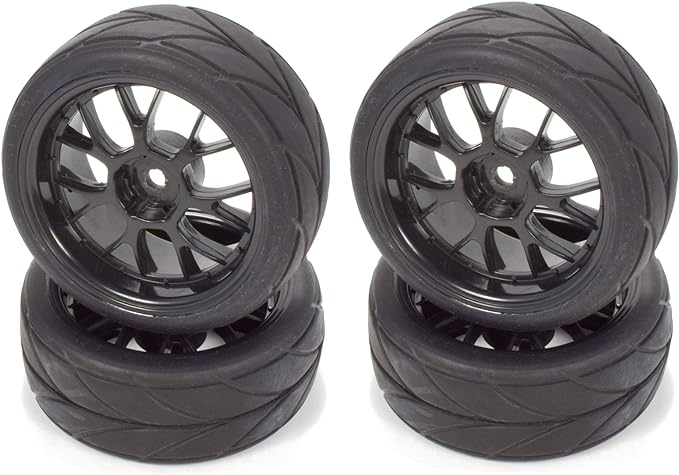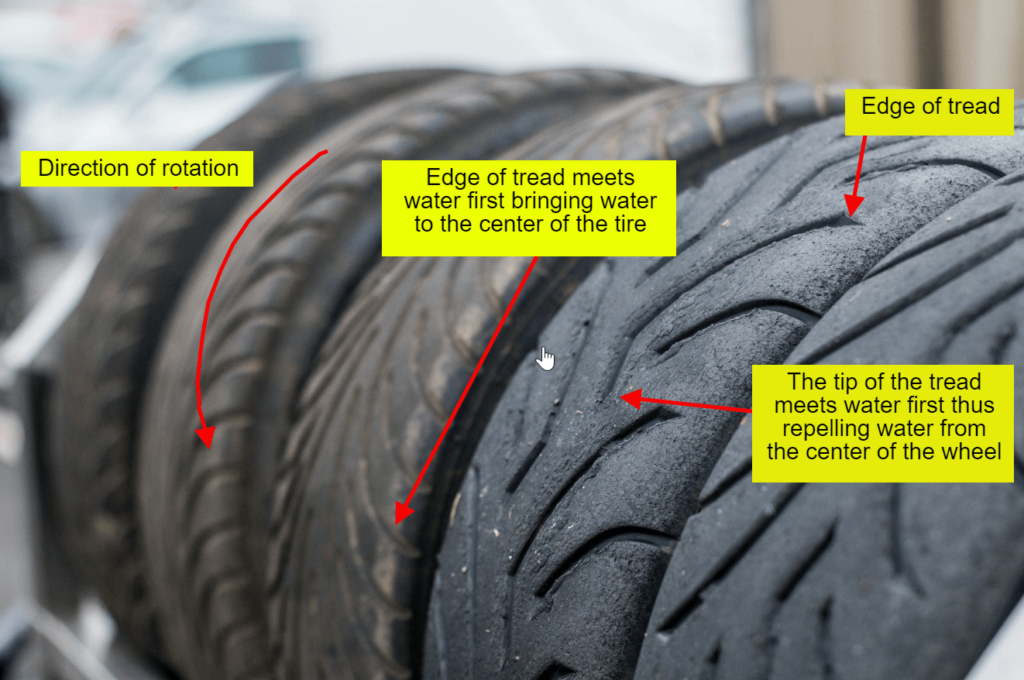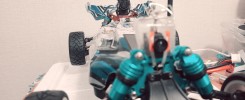RC cars are like their much larger real-life counterparts where tires play a crucial role in how they behave while moving. And most tires come with threads and these treads (not threads) come in a variety of patterns – directional, symmetrical and asymmetrical patterns. We’re just going to discuss directional types for now and how we should install them on our RC vehicles.
What Are Directional Tires
This type of tire gets its name from its directional tread pattern. This means the tires are meant to rotate only in one direction hence the term directional. Most patterns for directional wheels make some sort of a “V” or a “Y” shape when observed head-on.
You don’t actually need tire treads when the surface is dry and smooth. For everything else, you should have tire treads.
They are supposed to offer better performance in wet or dirty conditions when you have the need for speed.
Why Directional Tires Have “V” or “Y” Tread Pattern
When you view a directional tire pattern, the design either makes a “V” or “Y” shape or a similar inverted shape. The reason for this is that the shape helps to repel water or dirt away from the contact surface between the tire and the ground. It prevents the effect called hydroplaning (also called aquaplaning) where your vehicle loses grip on the surface and feels like it’s floating on water. So the sharp pattern helps to get rid of water more efficiently when your RC car is at high speed.
Do You Really Need Directional Tires on RC Car
Well, the best answer is it depends. Depending on the surface condition obviously. Chances are you won’t be driving your RC vehicle when it’s raining but if you choose to do so, just like in F1, you’d definitely want to have directional tires. Also, they look so cool!
How to Install Directional Tires on RC Car
Here’s the interesting part. How should we place the tires since the tread pattern can be pointing in one direction? For full-size cars, there’s always an arrow on the wall of the tire that tells us the direction the wheel should be rotating. For RC, well, you won’t find any.

The bottom tip of the “V” pattern should be pointing forward when you’re viewing the tire from the top (pointing back if you view it from the bottom). But why?
Let’s imagine the tires in the image below are rotating forward. The tire on the left has an inverted “V” pattern while the one on the right has a “V” shape.

With an inverted “V” pattern, the edge of the tread will make first contact with the water on the surface. This pushes water into the center of the wheel due to the inverted position and causes hydroplaning.
With a “V” pattern, the tip of the “V” will meet the water before the end of the tread which will squeeze water from the center of the wheel to the edge. This helps to repel water away from the contact point of the wheel with the surface.
The bottom tip of “V” in the tread pattern should be pointing toward where your RC car is going
This principle applies to both front and rear tires. And since front tires wear down faster than rear tires, feel free to move your front wheels to the back.

